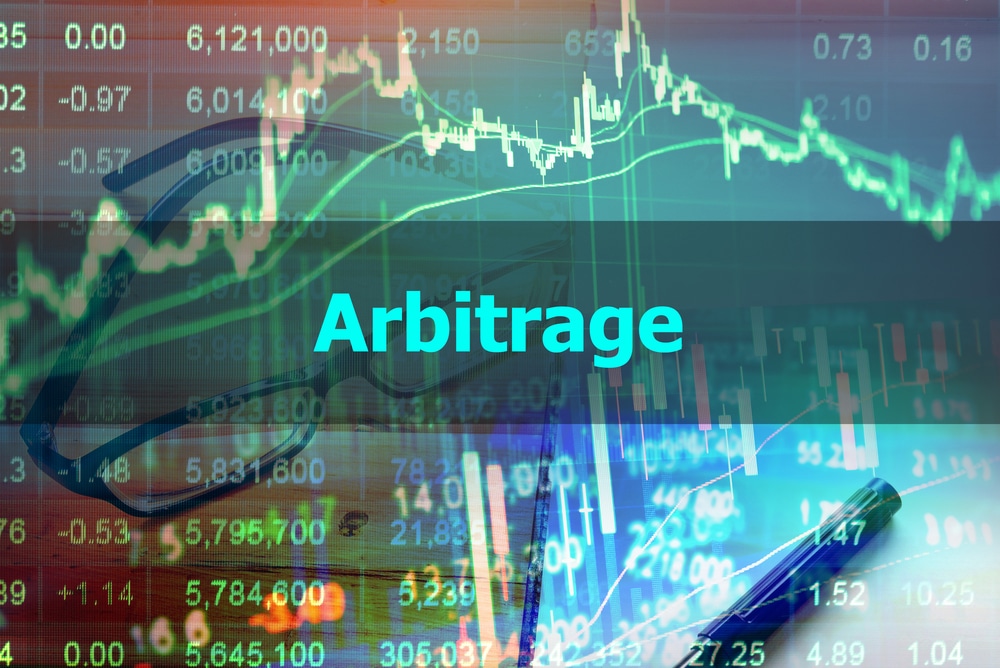Every day, cryptocurrencies worth billions of dollars change hands among traders. These digital assets are traded on crypto exchanges, which display varying prices for the same tokens. Some traders take advantage of the price differences to make profits. This type of trading is known as crypto arbitrage. If you wish to learn more about it, keep reading this article.
Understanding Crypto Arbitrage
Arbitrage trading is a strategy where a digital token is bought in one market and quickly sold in another at a higher price to exploit the price variance. Here is an example to help you understand better: Say Bitcoin is valued at $40,000 on Coinbase while it trades for $40,789 on Binance. As a professional Arbitrage trader, you can buy the coin from Coinbase and then sell it on Binance to pocket the price difference as your profit.
Note that your speed determines whether you will make profits or not. That’s because these price differences do not last long. So, you need to time the market accurately to become a successful arbitrage trader. A notable arbitrage opportunity was noticed in 2020 when the Filecoin token hit the market. Some exchanges listed it at $30, while others set its price at $200.
📈🤖 Unlock unparalleled trading potential with GPT Stocks Master AI! Revolutionize your portfolio, leveraging real-time insights and predictive analytics. Don’t miss out – step into a world where precision and profitability meet. Ready to transform your trading journey? Click “Master My Trades” now for your exclusive access! ✨🚀📊
How Crypto Prices Work
You have probably asked yourself at some point how cryptocurrencies get their value. Some crypto critics argue that since many digital tokens are non-backed, prices assigned to them are just speculative. On the other hand, pro-crypto individuals say the price people are willing to pay to buy a particular crypto is the actual value of the coin.
On crypto exchanges, traders determine the prices of crypto assets by placing buy and sell orders, which are visible on order books. For example, if a buyer places a buy order for Bitcoin at $40,000 and a seller places a sell order with the exact amount, an exchange will match up the two orders and complete the transaction. If this is the latest Bitcoin transaction on the exchange, $40,000 becomes the coin’s market price.
Types of Arbitrage
There are several types of arbitrage trading. They include:
Between Crypto Exchanges
This involves buying a digital currency on one trading platform, then moving it to another and selling it at a higher price. This arbitrage trading method comes with various challenges. For instance, exchange-to-exchange transfers can take several minutes to complete. So, by the time your crypto arrives in your account, the price difference may no longer exist. Network fees are another issue. Some blockchains charge high gas fees, which could be higher than the expected profits.
Triangular Arbitrage
With this arbitrage method, you need three different tokens that have price differences on a single exchange. Here is an example: let’s say a trader finds an arbitrage opportunity involving Ethereum, Solana, and BNB. One of the tokens may be underpriced on the trading platform. So, the crypto trader might capitalize on the arbitrage opportunity by selling their Ethereum for Solana and then using Solana to purchase BNB before buying Ethereum using BNB. If indeed they saw a price difference, the trader should now have more Ethereum than when they began exploiting the arbitrage opportunity.
Statistical Arbitrage
This arbitrage involves the use of a trading bot, which has the capacity to scan and trade hundreds of crypto assets at once. So, you need to select a well-performing bot if you want to make profits through this type of arbitrage trading.
Risks Associated With Arbitrage Trading
The major risk in arbitrage trading is slippage. This happens when you place a buy order, but the order is larger than the cheapest offer on an exchange’s order book. So, that means your order will “slip,” causing you to pay more than the expected price, thus wiping out any potential profits from arbitrage.
Another risk that comes with arbitrage opportunities is price movement. As mentioned earlier, price differences only last a few minutes, so you need to be quick; otherwise, you might end up with losses.

